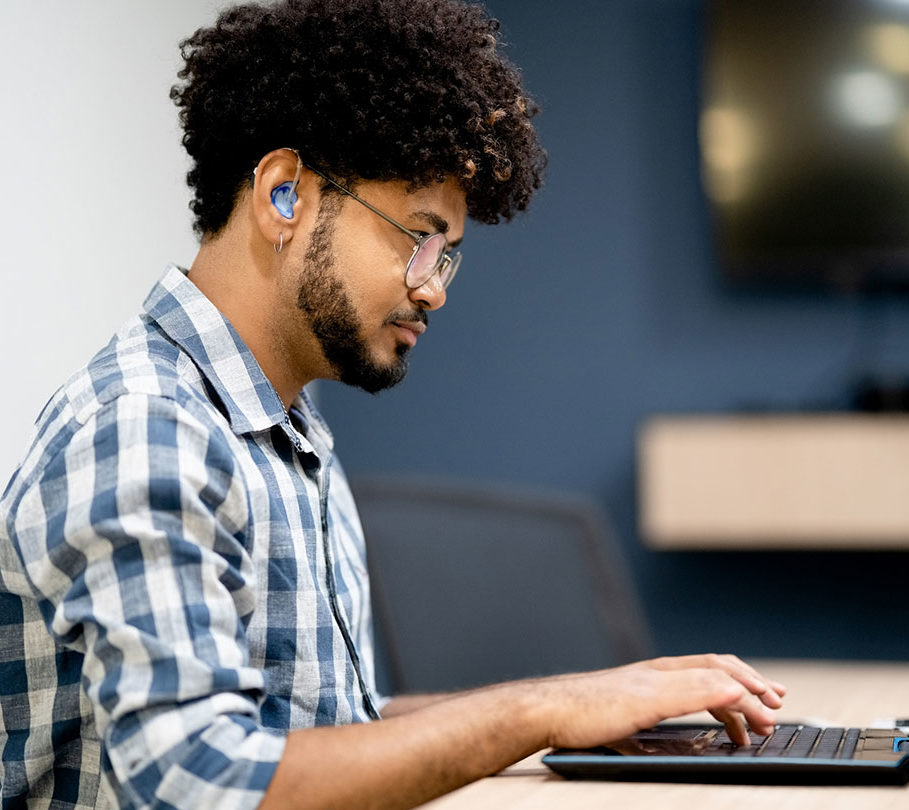Introduction
Niagara College Accessibility Services support students with permanent or temporary disabilities. The list below includes examples of different disabilities, but are not limited to the following:
Permanent Disabilities
- Learning Disabilities (LDs)
- Mental Health (e.g., depression or anxiety)
- Chronic Medical Condition (e.g.,Cerebral Palsy, Cystic Fibrosis, Chronic Fatigue)
- Attention Deficit Hyperactivity Disorder (ADHD)
- Physical, visual or hearing impairments
Temporary Disabilities
- Fractured body part (e.g., broken leg/arm)
- Medical emergency (e.g., hospitalization or surgery)
Documentation
- It is the students’ responsibility to submit medical documentation from a regulated health care practitioner, such as a psycho-educational assessment.
- The documentation is assessed to determine eligibility for accommodations. Students are protected by legislation (OHRC, n.d.), therefore, students are not obligated to disclose their diagnosis; this information is considered confidential and private.
Letter of Accommodation
Accessibility Services works collaboratively with students to develop a LOA that is specifically tailored to each student’s needs and functional limitations. Therefore, an accommodation will present differently for each student and flexibility is required in order to foster student success. The LOAs are distributed to faculty members and pertinent staff once written consent is provided.
Academic Accommodations
Academic accommodations are in place to level the playing field and provide an equal opportunity for students to obtain an education (OHRC, n.d.). Students decide which accommodations are included or excluded on their LOA. Accommodations are student-initiated, therefore, it is the student’s responsibility to contact the professor with requests.
The four most common accommodations include the following:
- additional time for quizzes, tests, or exams
- extensions for assignment deadlines
- computerised note-taking software
- leave and return as needed
Working Collaboratively with Faculty
Accessibility Services works collaboratively with students, the college as a whole, and faculty members in particular. Collaboration is key. We are all working towards a common goal: student success. Everyone has a role to play to ensure students with disabilities are successful. By collaborating with different departments, we reach that goal together.
This partnership permits us to come together and share different perspectives and expertise, resulting in the identification of barriers, concerns, and potential solutions (Scott, 1996).
Questions about a LOA?
If you have any questions regarding the LOA or how it directly applies to an individual student, please contact the Accessibility Consultant listed on the student’s LOA. The first step would be to arrange a meeting.
Students’ diagnoses will not be disclosed during a meeting, but a discussion surrounding functional limitations is possible. For instance, a student may struggle with short or long-term memory or occasionally be absent due to disability-related reasons.
Accessibility Services can assist with brainstorming strategies on how to best support our target population. We can also examine alternative evaluation formats where students are still able to demonstrate the course requirements. Not all assessment methods cater to students’ preferred learning styles or functional limitations. Providing a variety of assessments will promote task completion, engagement, and promote success.
Referrals
Our service is not limited to academic accommodations, we also offer support with learning strategies and/or assistive technologies.
The Learning Strategist (LS) and Assistive Technologist (AT) meet with students individually or in groups. The LS focuses on academic skills, such as time management or test-taking strategies, whereas the AT will train and recommend assistive software, such as Read and Write or OneNote.
We encourage faculty and support staff to direct students to Accessibility Services should they disclose a disability, and a LOA has not been established.
Summary
- Student success is a collaborative effort.
- Students with disabilities self-identify as having a permanent or temporary disability and a LOA is created.
- If students require an accommodation, it is their responsibility to contact the faculty to negotiate alternative submission dates.
- Accommodations, learning strategies, and assistive technologies can be utilized to promote the successful completion of a course/program.
Accessibility Services supports both students and faculty members and are willing to address any questions surrounding accommodations, processes, learning strategies, or assistive software. As well, we can arrange a meeting to brainstorm strategies and possible solutions.



